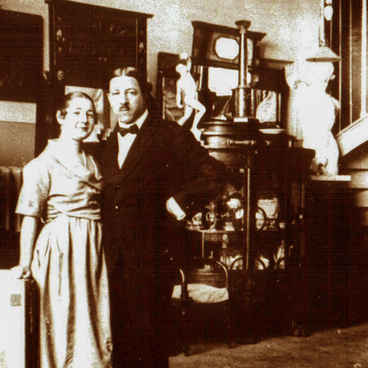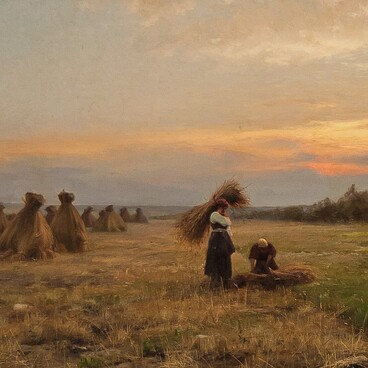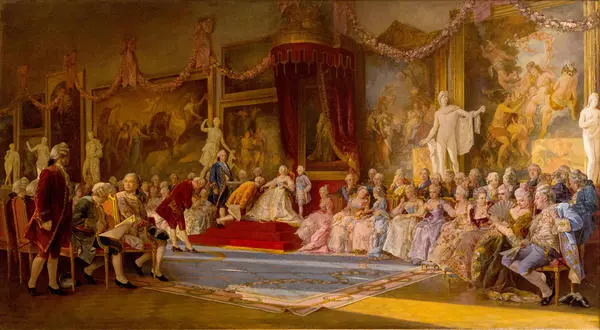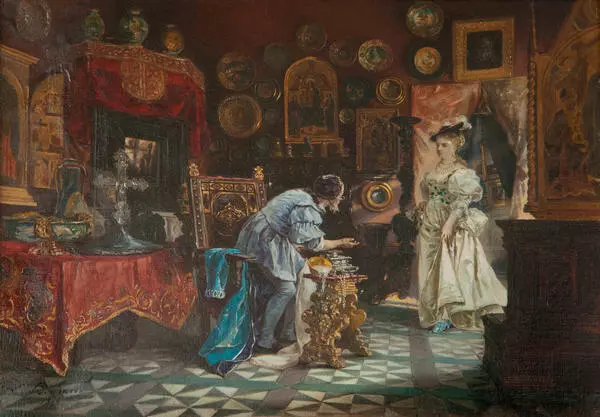‘Portrait of a Woman’ from the collection of the Volgograd Museum of Fine Arts differs from most of Valery Jacobi’s other works. The artist was a master of historical paintings and everyday scenes from the life of the common people, and the images of the vamp southern beauties, like the character of this portrait, were not typical of his work.
However, researchers note an orientation towards salon aesthetics and the influence of oriental motives in some of Jacobi’s paintings of the 1870s.
Valery Jakobi was born in 1834, in the village of Kudryakovo, the Kazan Governorate, into the family of a landowner. He graduated from the city gymnasium and entered the Imperial Kazan University, but did not finish the course.
In 1856, Jacobi entered the Imperial Academy of Arts in St. Petersburg. His teacher was a master of historical painting, artist Alexey Markov. Jacobi began his creative career with genre paintings, but later began to work more on large-scale historical canvases.
Jacobi was one of the first artists to address the subject of katorga (forced labor camps). In 1861, he created the painting ‘The Rest of the Prisoners’, for which he received a major gold medal and the right to travel abroad. Jacobi spent the 1860s abroad on a state-funded trip, visited Germany, Switzerland, Italy, and France. During this period, he painted a number of small genre paintings, as well as the canvases ‘The Ninth of Thermidor’ and ‘Cardinal Guise, who received the head of Admiral Coligny, killed on St. Bartholomew’s night.’
Jacobi returned to St. Petersburg in 1869, a year later he received the title of professor for the painting “The Arrest of the Duke von Biron”, and in 1870, became a member of the Academic Council. In 1883, he became a professor at the Academy of Arts. Subsequently, the artist was fired from these positions due to the reorganization of the Academy
Valery Jacobi spent the last years of his life in St. Petersburg, and then in the south of France and in Algeria, traveling to the African countries of the Mediterranean.
Valery Jakobi was born in 1834, in the village of Kudryakovo, the Kazan Governorate, into the family of a landowner. He graduated from the city gymnasium and entered the Imperial Kazan University, but did not finish the course.
During the Crimean War, Jacobi signed up as a volunteer in the people’s militia, which was sent to the Crimea. However, he did not have to go to the front line: the war ended when the artist’s unit was on the way.
In 1856, Jacobi entered the Imperial Academy of Arts in St. Petersburg. His teacher was a master of historical painting, artist Alexey Markov. Jacobi began his creative career with genre paintings, but later began to work more on large-scale historical canvases.
Jacobi was one of the first artists to address the subject of katorga (forced labor camps). In 1861, he created the painting ‘The Rest of the Prisoners’, for which he received a major gold medal and the right to travel abroad. Jacobi spent the 1860s abroad on a state-funded trip, visited Germany, Switzerland, Italy, and France. During this period, he painted a number of small genre paintings, as well as the canvases ‘The Ninth of Thermidor’ and ‘Cardinal Guise, who received the head of Admiral Coligny, killed on St. Bartholomew’s night.’
Jacobi returned to St. Petersburg in 1869, a year later he received the title of professor for the painting “The Arrest of the Duke von Biron”, and in 1870, became a member of the Academic Council. In 1883, he became a professor at the Academy of Arts. Subsequently, the artist was fired from these positions due to the reorganization of the Academy
Valery Jacobi spent the last years of his life in St. Petersburg, and then in the south of France and in Algeria, traveling to the African countries of the Mediterranean.





